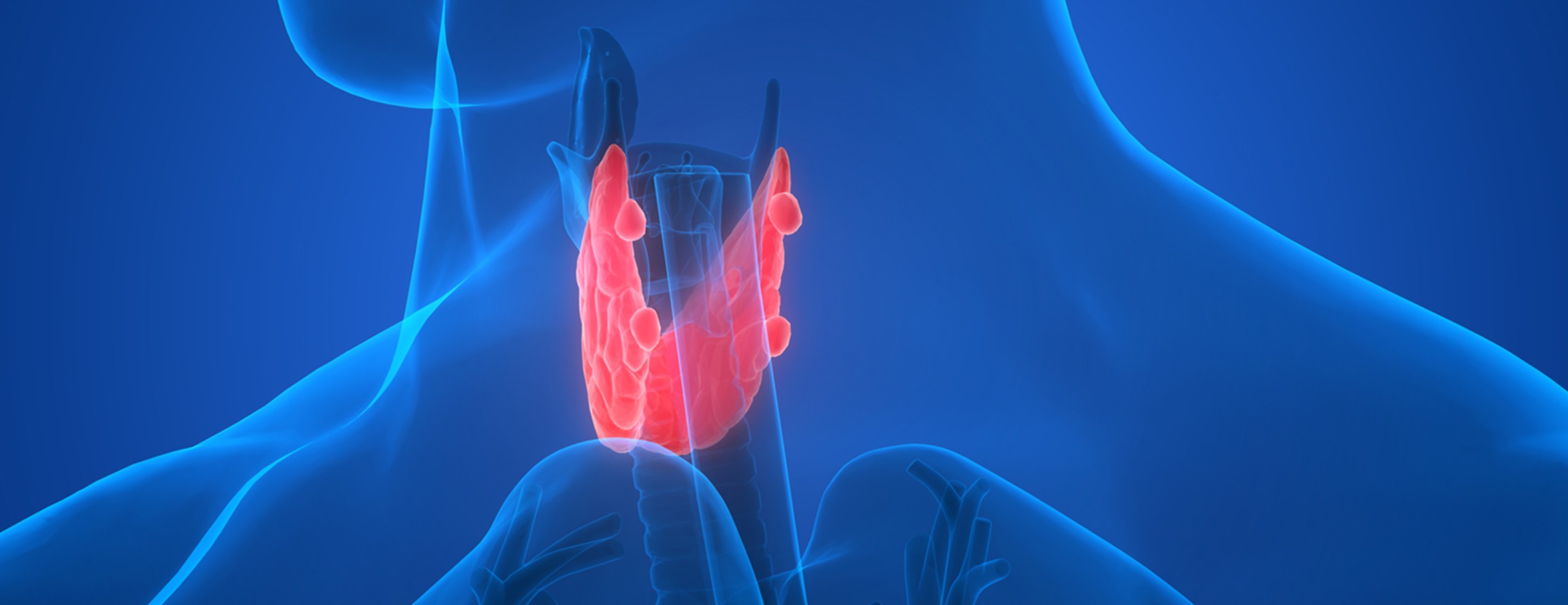
Parathyroid Biopsy
Definition
A parathyroid biopsy is the removal of a small piece of a parathyroid gland for examination under a microscope. The parathyroid glands are found just behind the thyroid gland on each side of the neck.
Alternative Names
Biopsy - parathyroid
How the Test is Performed
There are two parathyroid glands on each side of the neck, making a total of four glands. The parathyroid glands can't be felt with the hands.
A parathyroid biopsy is done while you're awake.
- Using an ultrasound machine, the health care provider locates the gland that is of concern.
- A thin needle is inserted directly into the gland, and a small piece of tissue is removed.
- The procedure takes 10 to 30 minutes.
The tissue is sent to a laboratory, where it is examined under a microscope. The level of
How to Prepare for the Test
Tell your provider if you have any drug allergies or bleeding problems, or if you are pregnant.
Make sure the provider knows about all the medicines you're taking, including any herbs or supplements. Tell your provider if you're taking any blood thinning drugs (aspirin, heparin, Lovenox, warfarin). You may have to stop taking them a few days before the procedure. Do NOT stop any medicines on your own. Ask your provider first.
How the Test will Feel
You may feel a sting as the needle is inserted into the gland. Most people do not need any pain medicine.
Why the Test is Performed
The parathyroid glands release PTH. This hormone controls the level of calcium in the body.
This procedure is most often done to rule out the cause of a high parathyroid hormone level.
It may also be done if an ultrasound exam shows an enlarged parathyroid gland.
Normal Results
There is no swelling, PTH level is normal, and cells from the tissue sample are normal.
What Abnormal Results Mean
The test confirms that a parathyroid gland is enlarged if PTH level is too high or cells from the sample are abnormal.
Abnormal results may be due to:
- Noncancerous tumor of the parathyroid gland (
parathyroid adenoma ) Parathyroid cancer (rare)- Enlargement of all 4 parathyroid glands (
parathyroid hyperplasia ) - Disorder in which one or more of the endocrine glands are overactive or form a tumor (multiple endocrine neoplasia) ([
MEN I ] or [MEN II ])
Risks
The main risks of the procedure are bruising and bleeding into or around the thyroid gland. If bleeding is severe, it may put pressure over the windpipe (trachea). In this case, surgery is needed to correct the problem. This complication is rare.
Some people develop temporary hoarseness when the nerve that runs close to the parathyroid glands is injured. This complication is also rare.
References
Darr EA, Sritharan N, Pellitteri PK, Sofferman RA, Randolph GW. Management of parathyroid disorders. In: Flint PW, Haughey BH, Lund V, et al, eds. Cummings Otolaryngology: Head & Neck Surgery. 6th ed. Philadelphia, PA: Elsevier Saunders; 2015:chap 124.
Review Date: 06/11/2018
The information provided herein should not be used during any medical emergency or for the diagnosis or treatment of any medical condition. A licensed physician should be consulted for diagnosis and treatment of any and all medical conditions. Call 911 for all medical emergencies. Links to other sites are provided for information only -- they do not constitute endorsements of those other sites. Copyright ©2019 A.D.A.M., Inc., as modified by University of California San Francisco. Any duplication or distribution of the information contained herein is strictly prohibited.
Information developed by A.D.A.M., Inc. regarding tests and test results may not directly correspond with information provided by UCSF Health. Please discuss with your doctor any questions or concerns you may have.





